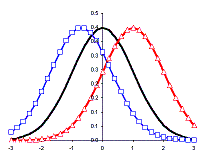| Vitae | Goal Statement | Coursework | Analytical & Integrated Thinking | Research | Professional Experiences | Dissertation Planning |
Current Goals Statement: Spring 2009
As I said previously in my original goals statement, I had always known that I wanted to work in the field of education ever since adolescence. I wanted to understand how students learn, how to optimize that learning, and understand the mechanisms that promote or prevent learning. Through exploration in the field of educational psychology, I came to realize that motivation and self-regulation are not just concepts related to learning, but as concepts related to everyday life. The choices that an individual makes, the behaviors that people exhibit when confronting failure or success, and the approach that people take when tackling a problem is all directly or indirectly related to concepts of motivation and self-regulation. Although I knew that I was interested in studying motivation and self-regulation, I struggled to identify a context to study these variables in, until I was introduced to the concept of Critical Race Theory in my first doctoral course.
The Ways of Knowing course was designed to introduce students to the different ways different people see the world according to class, gender, and race. Before enrolling in that class, I thought that being successful meant that I did not need to learn about anything else other than theoretical educational psychology models and research methods. However, my colorblind worldview had evolved after reviewing the ideas of Critical Race Theory (CRT). Specifically, CRT is a movement, dialogue, and perspective that analyzes the institutional, structural, and hierarchical nature of race and racism and is a force that challenges racism through the power of law (Delgado & Stefanic, 2001). Although CRT originated in the field of law, this movement has spread to other areas of study as well, such as education. Particularly in education, many teacher programs instill the “all students can learn” model, and that teachers are in full control of a students’ academic success regardless of race, gender, or class (Villenas, Deyhle, & Parker, 1999). However, as optimistic as this may sound, doing so creates a colorblind approach to teaching, and as a result, perpetuates the racial biases and hierarchies.
Personally, I have to admit that I had endorsed this colorblind worldview. I believed that all students had the same ability and opportunity to learn and if educators could motivate students enough to take charge of opportunities they could overcome barriers and be successful. However, as I delved deeper into the study of race my concept of the educational and racial system had changed. My ultimate goal is no longer to dedicate my life to research related to motivation/self-regulation and increasing academic achievement in all students, but now, it is to understand the nature of academic achievement for different students and to help find balance to pave the road for success.
What I have learned about race, diversity, and culture has not only shaped my research goals and teaching philosophy, but also my view of the world. With this understanding, I will be cognizant of the learning needs of students from diverse backgrounds and will constantly apply what I have learned into my pedagogical practices and research agendas. I believe that it is especially important to educate students on the nature of race within education and methods that promote equality among learners. Specifically, as a researcher, I will pursue my goals through understanding how stereotypes function through motivation and self-regulation. I believe that the everyday explicit and implicit beliefs that everyone uses to make sense about others strongly influences (if not causes) the hierarchical and institutionalized nature of racism, classism, and sexism.
